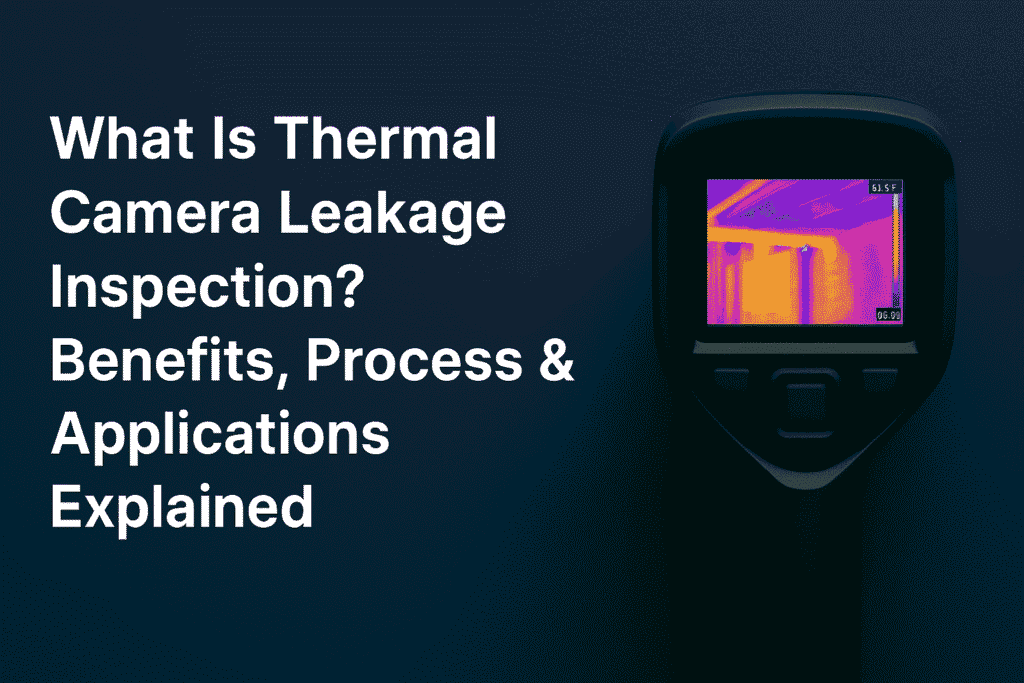Water leakage is a silent enemy that can cause significant damage to buildings if left undetected. Traditional inspection methods often fail to identify hidden leaks, leading to costly repairs and structural issues. That’s where advanced solutions like thermal camera leakage inspection come in.
This modern, non-invasive technique helps detect hidden water leaks quickly and accurately. By capturing temperature variations, thermal imaging can pinpoint moisture buildup behind walls, ceilings, and floors—without any destructive testing.
In this blog, we’ll explore what thermal camera leakage inspection is, how it works, its benefits, and where it’s most effectively used.
What Is Thermal Camera Leakage Inspection?
Thermal camera leakage inspection, also known as infrared thermography, is a non-destructive method used to detect moisture and water leakage in buildings. It uses infrared cameras to capture temperature variations on surfaces.
When there is a water leak, the moisture causes a cooler area that stands out in a thermal image, helping inspectors locate the source of the leak without opening walls or ceilings.
This technology is widely used in residential, commercial, and industrial settings for preventive maintenance and accurate diagnosis of hidden issues. It’s an efficient and cost-effective alternative to traditional leak detection methods.
How Does Thermal Imaging Work for Leak Detection?
Here is how thermal imaging work for leak detection:
1. Infrared Technology in Action
Thermal cameras detect infrared radiation (heat) emitted from objects. When water is present behind walls or under floors, it changes the surface temperature.
These temperature differences appear in various colors on a thermal image, allowing professionals to identify areas with potential water intrusion.
2. Non-Invasive Detection
One of the main advantages of thermal inspection is that it doesn’t require drilling, breaking tiles, or damaging walls.
This makes the process clean, fast, and ideal for diagnosing leaks in sensitive or finished areas.
3. Accurate Diagnosis
Trained inspectors can interpret the thermal images to locate the exact source of the problem, whether it’s a plumbing issue, roof leak, or waterproofing failure.
Benefits of Thermal Camera Leakage Inspection
Here are the benefits of thermal camera leakage inspection:
1. Early Leak Detection
By spotting moisture before visible damage occurs, thermal imaging helps prevent major repairs and mold growth.
2. Cost-Effective Maintenance
Since there’s no need to damage structures during inspection, property owners save on unnecessary repairs and labor.
3. Time-Saving
Thermal inspections are quick and can cover large areas in a short amount of time, making them ideal for commercial buildings and apartments.
4. Enhanced Accuracy
The technology provides precise insights into the exact location and spread of the leak, which traditional methods often miss.
Applications of Thermal Camera Leak Detection
Here are the applications of thermal camera leak detection:
1. Residential Buildings
Homeowners use thermal inspections to detect leaks in bathrooms, kitchens, basements, and roofs. It’s especially useful before buying or selling a property.
2. Commercial Properties
For offices, malls, and industrial units, thermal imaging ensures plumbing systems, HVAC lines, and flat roofs are functioning without hidden leaks.
3. Waterproofing Verification
After waterproofing treatments, thermal cameras help verify the effectiveness by ensuring no moisture remains trapped.
4. Insurance Claims & Property Assessments
Thermal imaging reports provide visual evidence for insurance claims and help property assessors identify hidden damage.
FAQ
Yes, it’s completely safe. Thermal imaging is non-contact and non-invasive, meaning no parts of your home or office are damaged or touched during inspection.
Yes. Thermal cameras can identify moisture patterns under tiles, concrete, and other surfaces by detecting temperature differences caused by hidden water.
Typically 1 to 2 hours, depending on the size of the area. Larger buildings or complex layouts may take slightly longer.
Conclusion
Thermal camera leakage inspection is a smart, non-invasive solution for detecting hidden water leaks. With benefits like early detection, cost savings, and accurate diagnostics, it’s a valuable tool for both residential and commercial properties. If you suspect a hidden leak or want peace of mind, a thermal inspection is a reliable and efficient choice.

